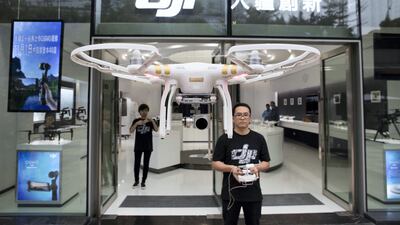Britain recorded a sharp increase in the number of near misses between drones and aircraft in 2017 in a sign of the growing popularity of the gadgets.
Investigators recorded 92 incidents last year including a case when a drone flew close to the right wing of an Airbus A319 as it prepared to land at London’s Gatwick airport putting 130 lives at risk, according to the pilot.
“If you see a drone flying past your cockpit it's a real shock to the system,” said Steve Landells of the UK’s pilots’ union. “Anything that distracts you from getting the aircraft down on the ground is a safety hazard.”
Britain is responding to the threat by preparing to introduce new laws that will require enthusiasts to register their devices and to sit safety awareness tests. Officials introduced a code of practice in 2016 that barred the flight of drones above 120 metres and close to airports.
Drones have been involved in six confirmed collisions with aircraft around the world since 2015 but they have not resulted in crashes or fatalities, according to a database compiled by the Aviation Safety Network.
The most recent was in November 2017 when an Argentinian airline carrying 121 people was struck on its approach to Buenos Aires airport. It suffered minor damage to the fuselage.
The UK’s planned legislation comes after it commissioned a study into the potential dangers posed to passenger jets if they collide with drones. It found that a drone weighing 2kg could critically damage a plane windscreen in the event of a mid-air collision.
The sighting of a drone near Gatwick airport in July last year forced flights to be diverted and the temporary closure of the runway.
The research by the Press Association news agency based on official reports found that the UK near misses in 2017 had increased from 71 in 2016 and 29 in 2015.

